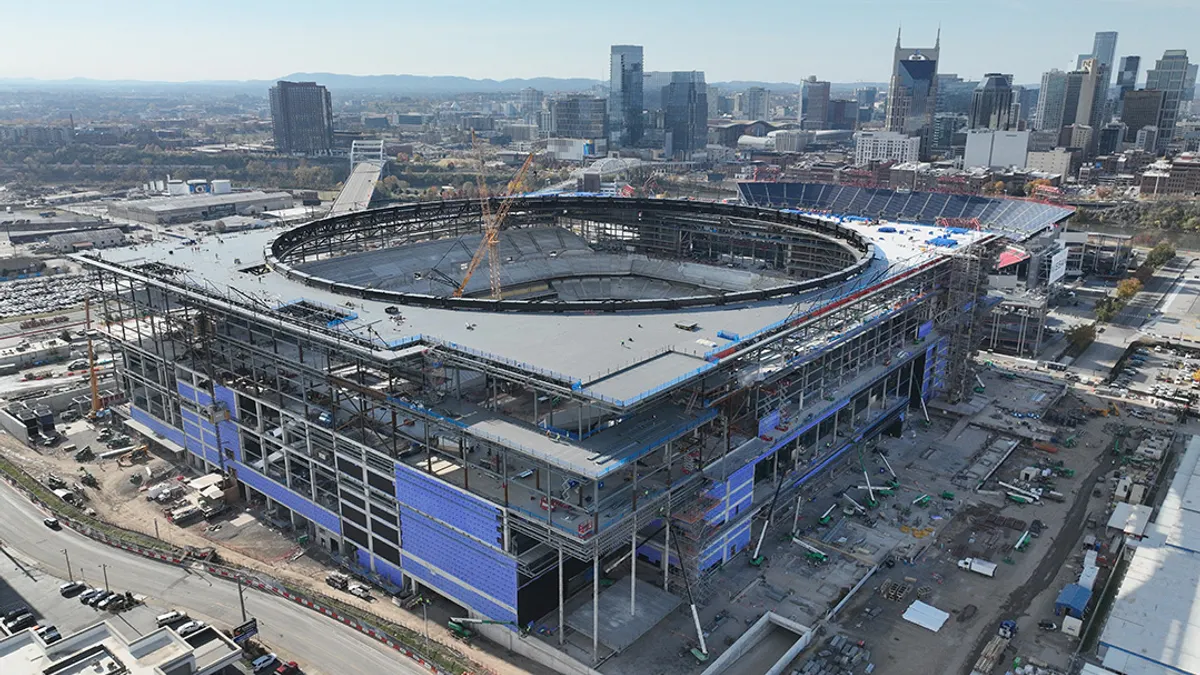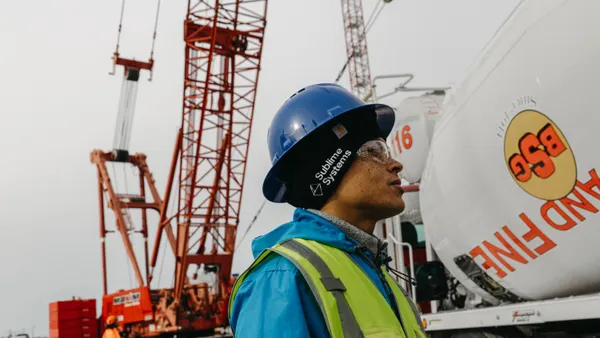According to AGC’s 2024 Construction Hiring and Business Outlook report, many contractors anticipate robust growth this year. That could mean more bids, bigger projects, and increased demand for your services. But a hidden barrier, rooted in outdated accounting practices, could prevent you from capitalizing on this trend.
Outdated systems are a strategic liability. Manual processes, spreadsheet workarounds, and disconnected tools create friction that slows decisions, obscures financial visibility, and limits the ability to win new projects and scale.
The modern CFO isn’t waiting for the market to dictate what’s next. They’re preparing now by upgrading core systems like accounts payable, streamlining financial operations, and investing in real-time data infrastructure that unlocks speed, accuracy, and smarter risk-taking.
The firms that win the next wave of work will be the ones whose finance teams are lean, intelligent, and built for scale. The opportunity is here, and your infrastructure must rise to meet it.
The Hidden Costs of Accounting System Limitations
Without the right systems in place, construction accounting is prone to disruption. Many contractors underestimate how directly outdated financial tools impact profitability. But when you're juggling multiple stakeholders, shifting timelines, and compliance-heavy projects, even small inefficiencies can snowball into major setbacks.
Do these issues sound familiar?
- Multi-Entity Chaos: Managing general contractors, subcontractors, suppliers, and owners (each with different payment terms) becomes a bottleneck without integrated systems. Manual workflows delay billing and disrupt cash flow.
- Revenue Recognition Gaps: Without tools built for percentage-of-completion accounting, change orders, and retention tracking, financials can quickly become inaccurate, leading to misstatements, revenue delays, and audit headaches.
- Profitability Blind Spots: If you can’t track job costs, labor, and equipment allocation in real time, you’re flying blind. Cost overruns become harder to catch, and margins slip away unnoticed.
- Cash Flow Instability: Without accurate forecasting and cash visibility, construction’s natural seasonality and supply chain delays can expose your business to risky gaps in working capital.
- Compliance and Risk Exposure: Legacy systems struggle with complex requirements like lien laws, prevailing wage reports, and multi-state tax rules. Falling short can trigger fines, failed audits, or lost bonding capacity.
- Administrative Drag: Finance teams spend hours chasing paper, re-keying data, or generating last-minute reports for clients, vendors, or insurers, losing time that should be spent on strategy and growth.
- Stalled Innovation: When your infrastructure can’t adapt, neither can your business. Outdated systems make it difficult to test new pricing models, adopt emerging tech, or pivot quickly in response to market shifts, all of which limit long-term competitiveness.
- Lack of Visibility: When financial data is spread across disconnected systems, teams struggle to get a clear picture of what’s really happening. This lack of insight leads to reactive decision-making and missed opportunities to improve performance. In a high-stakes environment like construction, delayed information can be just as damaging as inaccurate information.
These are expensive challenges, and they’re exactly what modern accounting infrastructure is built to solve.
Modern Infrastructure Solutions for Construction Firms
If outdated accounting systems are costing your business money, modernization creates the foundation for next-generation financial strategy. By connecting field and finance teams in real time, modern infrastructure enables agile decision-making, fuels innovation, and positions CFOs to lead with confidence in a rapidly evolving market.
Here’s an overview of modern accounting infrastructure solutions for construction firms.
All-in-one Accounting Platform
Modern accounting systems integrate cloud-based project data with mobile-first tools, enabling real-time collaboration between the field and finance. Project managers can approve change orders, update budgets, and track job costs directly from the job site. Finance teams gain faster access to accurate data, reducing delays and improving projections. The result is a unified workflow that eliminates bottlenecks, strengthens cash flow management, and gives CFOs the visibility they need to drive smarter, faster decisions.
Automated AP/AR Workflows
Many tools can automate processes that employees have traditionally completed manually. Tedious tasks, such as subcontractor payments and client billing, can be taken off of your team’s shoulders, giving them more time to focus on strategy and client outreach. Automation can also help to accelerate invoice approvals, reduce duplicate entry errors, and keep your payment cycles on track.
Technology Integrations
Another advantage of modern accounting infrastructure is its ability to integrate with other systems, which can help you make more accurate decisions and monitor risk. Some key examples of useful technology integrations include:
- API connections with ERP systems
- Payment integrations for efficient payments and scheduling
- Budget management tools for accurate job costing
- Document management for lien waivers, contracts, and change orders
- Cloud infrastructure to help with data security, disaster recovery, and remote access, which is essential for decision-making in distributed construction operations
- Advanced fraud controls to identify and eliminate duplicate entries and questionable invoices
Advanced Analytics
Modern platforms offer the robust predictive analytics and forecasting capabilities you need to identify margin risk, cash flow gaps, and resource needs before they become serious problems. Custom dashboards turn raw data into real-time insight, helping leaders move faster and smarter. With this level of visibility, finance becomes a driver of innovation and positions your business to scale with confidence.
What Forward-Thinking CFOs Stand to Gain
With modern infrastructure, CFOs gain the visibility and real-time insights they need to evolve from reactive problem-solvers into proactive growth architects. By modernizing accounting platforms, CFOs empower teams to accomplish more.
For example, by automating your financial operations and AP workflows, CFOs eliminate manual bottlenecks that delay close cycles and obscure project-level visibility. Advanced AP platforms accelerate invoice approvals, reduce entry errors, and give finance teams the clarity to manage cash flow with precision. When integrated with broader financial and operational systems, AP automation creates a single source of truth that connects the field to finance in real time.
With the elimination of manual tasks, finance professionals gain time to focus on analysis, strategic modeling, and business partnerships. This shift fuels a culture where insight drives action and every team member contributes to growth.
Equipping teams with the right technology gives CFOs the confidence of accurate, real-time financials and predictive analytics, empowering them to pursue new lines of business, explore acquisitions, and take calculated risks, all with the assurance that their infrastructure can scale. This is the foundation for bold decision-making and next-level growth.
From Manual Bottlenecks to Measurable Gains
Growth brings opportunity, but only if your infrastructure is ready to support it. Outdated accounting systems may have gotten you this far, but they can’t keep pace with today’s project demands, regulatory pressures, or client expectations. And they won’t help you realize your vision for the future. By modernizing your accounting practices, you enable faster, more informed decision-making across your entire operation.
With the right tools in place, construction companies can unlock new efficiencies, reduce risk, and confidently pursue larger, more complex projects. Whether your goal is to scale or stay ahead of the competition, a modern accounting platform lays the foundation for sustainable, profitable growth.
Now is the time to invest in infrastructure that grows with you, because the next opportunity may depend on it.










